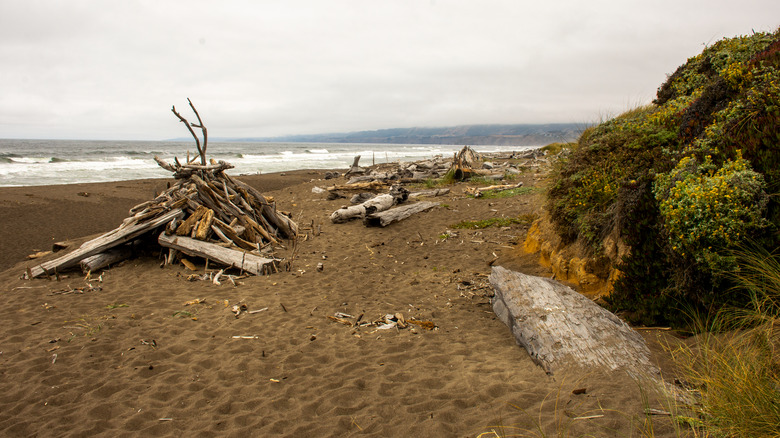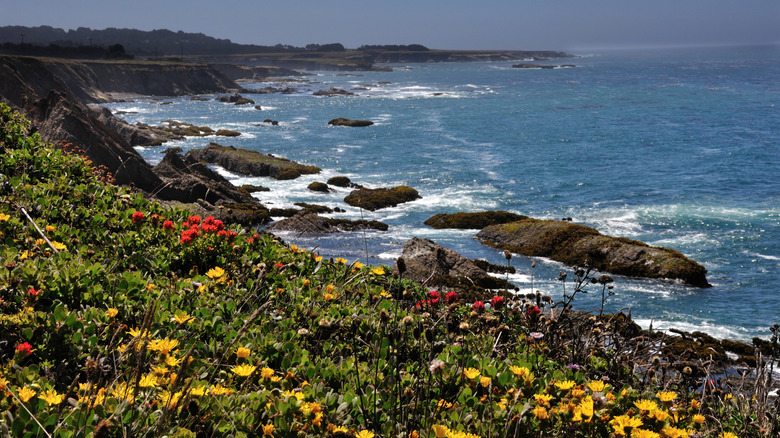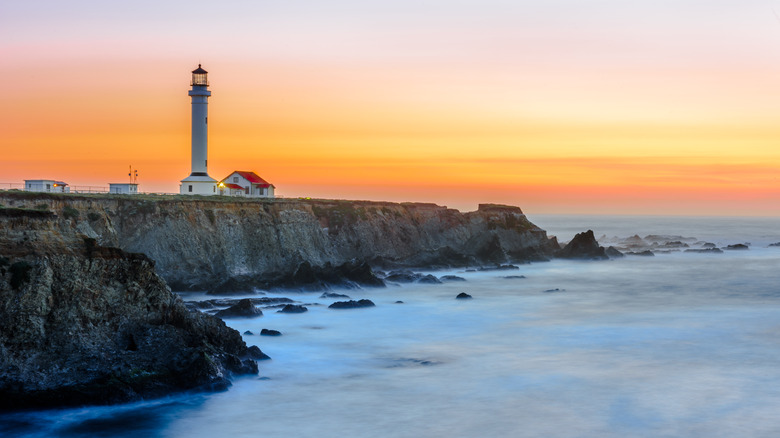California's Serene State Park With Sandy Beaches And Fish-Filled Streams Is Strewn With Coastal Wildflowers
California is practically synonymous with earthquakes. It's home to two-thirds of the United States' earthquake risk, and the 800-mile-long San Andreas Fault runs along its western edge. But there are some benefits that come with the presence of a massive fracture in the Earth's crust: The fault is responsible for some of California's most dramatic natural scenery.
Take Manchester State Park, located up the coast from San Francisco at the point where the San Andreas Fault intersects with the sea. Over time, tectonic activity has shaped the park's landscapes, and today, it's a serene outdoor playground with quiet dunes, otherworldly rock formations, windswept beaches, rushing streams, and trails lined with colorful wildflowers.
Extending north from the scenic Point Arena Lighthouse, the 1,500-acre state park features 5 miles of pristine coastline. While you can cast a line in the Pacific Ocean, the best fishing in the park is at a pair of streams, Brush Creek and Alder Creek, which are known for the coho salmon and steelhead trout that pass through their waters in winter.
Discover Manchester State Park's beaches and trails
A perfect way to get an overview of the park is to head out for a hike on the Manchester Beach Trail, a 2.4-mile out-and-back route that's open year-round. It's an easy and kid-friendly hike that takes less than an hour to complete. Along the journey, you'll see native birds, gorgeous Pacific shorelines, and, in spring, coastal wildflowers like poppies, blue irises, and sea pinks. Take a picnic and have lunch on the beach — Arena Market & Cafe in nearby Point Arena, about 15 minutes away by car, is a great place to stock up on food and drinks.
Fishing in the park's streams is a highlight for many visitors, but be aware that you'll need a sport-fishing license if you're hoping to reel in some trout or salmon. Visit the California Department of Fish and Wildlife website for details, as well as information about current regulations and potential closures.
Manchester State Park is also home to a diverse array of wildlife, ranging from tundra swans and endangered snowy plovers to mountain beavers and red-legged frogs. But you might want to leave your dog at home: While they are allowed in the park campground, you won't be able to take them on the park's trails and beaches due to wildlife restrictions.
Plan your trip to Manchester State Park
Visitors to the park won't want to miss a trip to the Point Arena Lighthouse just beyond the park's southern edge, one of the most stunning stops on the Pacific Coast Highway. Though an earthquake destroyed the original tower in 1906, it was rebuilt in 1908 and features an impressive 5,000-pound French-built lens composed of hundreds of delicate prisms. The lighthouse is open from 10 a.m. to 3:30 p.m. from fall through spring and 10 a.m. to 4:30 p.m. in summer. Tickets cost $5 for the lighthouse museum and an additional $5 to access the tower.
The park's campground is open from late May through early September, and you can arrange your stay through the park's reservation system. If you're in the mood for something featuring more creature comforts, check into Wharf Master's Inn (from $190 per night), a cozy property housed in a restored Victorian home near the beach in Point Arena. You'll also find casual dining options nearby, like Pier Place, which specializes in fresh seafood dishes. All of Point Arena's attractions are about a 15- to 20-minute drive from the park.
Manchester State Park is about a 3.5-hour drive from San Francisco and its international airport, one of the least-crowded airports in America. You'll want a car to navigate these remote landscapes, which aren't well served by public transport.


